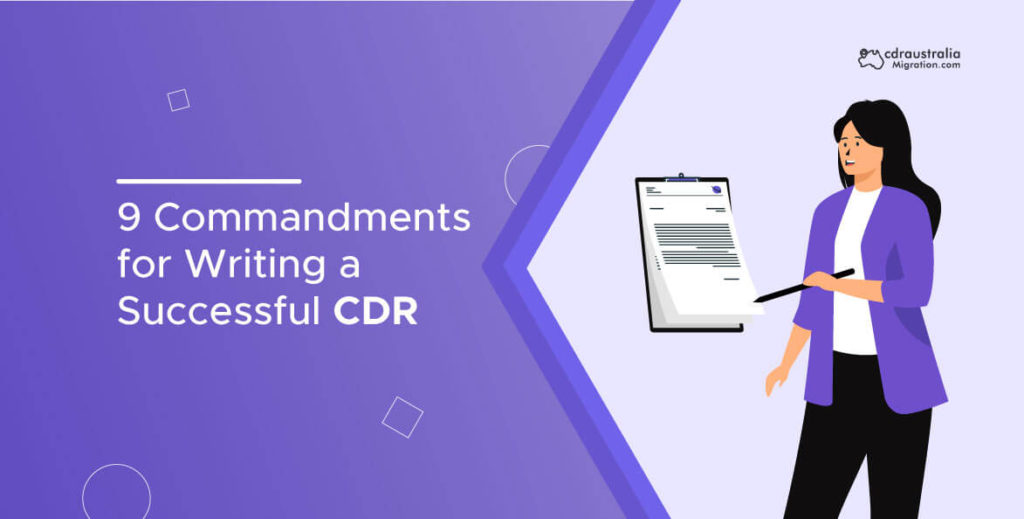9 Commandments for Writing a Successful CDR like Career Episodes, Summary Statement, and Continuing professional Development (CPD). If you present the following items in your Career Episode, you will certainly receive a positive competence assessment. You must follow all of EA’s instructions and recommendations in the MSA Booklet, as well as incorporate all of your job experience’s characteristics and descriptions in the CDR.
For the Migration Skills Assessment to be successfully reviewed by EA, you must prepare a winning CDR report. You can also get guidance from CDR writing pros to ensure that your CDRs are excellent and well-structured.
Excellent CDR Report contains following attributes
- Project goals, duration, your position in the hierarchy, the company’s history, and location
- The ANZSCO Code defines seven different positions (as per your engineering discipline) Always begin your Career Episode by explaining the project and the firm or organization for which you worked at the time. It could consist of the following items:
- The Project’s Objectives.
- The Company’s Name and Location,
- The Company’s history, and your current stage in your career (you were studying at the time, or was it your first job, or were you in a middle-management position at the time of CE you chose)
- The Project’s Duration and Your Position in the Project Hierarchy (which you might show through an Organogram).
Read the Engineers Australia guidelines thoroughly and number the paragraphs of the Career Episodes as indicated so that you can refer to them when writing your Summary Statement When writing Career Episode, only use the first person and active voice.
- Remember why you’re filing a CDR. The EA assessor is interested in learning about the engineering or technical problems you faced and the solutions you devised. As indicated with the ANZSCO codes, try to keep the problem relevant to your engineering discipline tasks.
- An EA evaluation, design elements are given a lot of weight. At least two designs you’ve worked on should be included, along with all of the information.
- Keep track of any engineering or technical calculations you did during your project, as well as the conclusions and outcomes you got. Include all these details in your Career Episodes and refer to them in the Summary Statement.
- Mention any Standards or Codes you adhered to, as well as any training or software you used. This adds legitimacy to your CDR while also demonstrating your progression as an engineer.
- Some of the personality attributes EA looks for in a possible Visa 189 candidate include any innovations, working with other team members and/or clients, and respecting teamwork and leadership talents. If you can demonstrate how much money your company saved as a result of your negotiations or ideas, EA is sure to reward you.
- Mention how you dealt with environmental, health, and safety norms and regulations in one or more of your Career Episodes. Any social activity or company-wide efforts you take to comply with environmental or safety regulations and avoid health concerns can be listed here.
- At the end of your Career Episodes, don’t forget to mention your career episode. The Project Outputs, the Recognition you gained for your effort, and the Goals or Targets you met are all examples of these.
Don’t get Rejected
The majority of CDRs that are denied do not follow Engineers Australia’s updated criteria or guidelines. Most candidates don’t give themselves enough time and rely on information from published sources or sample CDRs. It is not a good idea to copy any information into your CDR.
Each paragraph in the Career Episode should have its own code so that it may be easily identified and tracked in the Summary Statement.
CDRAustraliaMigration.com is doing everything necessary to educate the engineering community in order to create a win-win situation.
At a very low cost, we also provide Plagiarism Checking and Plagiarism Removal Services in the already prepared Competency Demonstration Reports. We ran all of our written CDRs through the world’s leading Plagiarism detection program (Turnitin) to ensure that there was almost no plagiarism.



